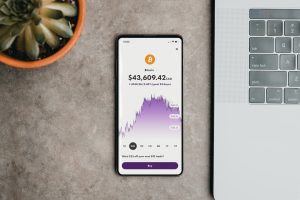Forex trading is an exciting and lucrative venture for many traders. However, it can be challenging to make consistent profits due to the volatile nature of the market. Visual analysis indicators can help traders to make informed and profitable trading decisions. They can help traders to identify trends, determine entry and exit points, and manage their risk. In this article, we will explain how to use visual analysis indicators in forex trading.
Visual analysis indicators are technical analysis tools that help traders to analyze price charts and identify potential trading opportunities. These indicators are based on mathematical calculations of price and volume data. They are plotted on price charts to help traders visualize market trends and patterns. There are many types of visual analysis indicators, but the most commonly used ones are moving averages, oscillators, and trend lines.
Moving averages are one of the most basic visual analysis indicators used in forex trading. They are calculated by averaging the price of an asset over a specific period. For example, a 50-day moving average is calculated by adding the closing prices of an asset for the past 50 days and dividing the result by 50. Moving averages are used to identify the direction of a trend. A rising moving average indicates an uptrend, while a falling moving average indicates a downtrend.
Oscillators are visual analysis indicators that measure the momentum of the market. They are plotted on a separate chart below the price chart. Oscillators are used to identify overbought and oversold conditions in the market. When an oscillator reaches an extreme level, it indicates that the market is overbought or oversold and is likely to reverse. Examples of oscillators include the Relative Strength Index (RSI), Stochastic Oscillator, and Moving Average Convergence Divergence (MACD).
Trend lines are visual analysis indicators that are used to identify the direction of a trend. They are drawn on a price chart to connect two or more price points. Trend lines can be used to identify support and resistance levels. When the price of an asset touches a trend line, it indicates that the trend is likely to continue. When the price breaks a trend line, it indicates that the trend is likely to reverse.
To use visual analysis indicators effectively, traders need to understand their strengths and weaknesses. Moving averages are useful for identifying the direction of a trend but are less effective in volatile markets. Oscillators are useful for identifying overbought and oversold conditions but can give false signals in ranging markets. Trend lines are useful for identifying support and resistance levels but can be subjective and vary between traders.
Traders should also be aware of the limitations of visual analysis indicators. They should not rely solely on these indicators to make trading decisions. Other factors such as economic news, geopolitical events, and market sentiment can also impact the market. Traders should use visual analysis indicators in conjunction with fundamental analysis and market sentiment analysis to make informed trading decisions.
In conclusion, visual analysis indicators are valuable tools for forex traders. They can help traders to identify trends, determine entry and exit points, and manage their risk. Moving averages, oscillators, and trend lines are the most commonly used visual analysis indicators. Traders should understand the strengths and weaknesses of these indicators and use them in conjunction with fundamental analysis and market sentiment analysis to make informed trading decisions. With proper use, visual analysis indicators can help traders to become more profitable in the forex market.





